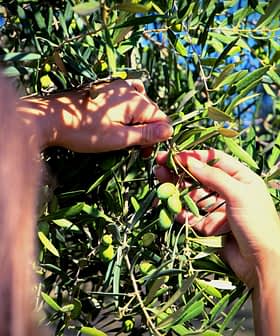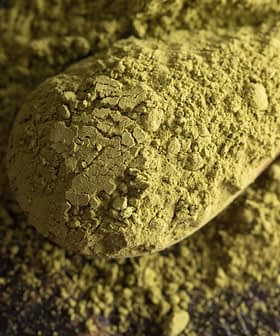 20.0K reads
20.0K readsBusiness
Xylella May Not Be Responsible for Olive Tree Devastation in Puglia, Study Finds

New research indicates that Xylella fastidiosa was only responsible for a small percentage of olive trees destroyed by Olive Quick Decline Syndrome in Puglia, contradicting previous beliefs. The findings suggest that the strategies currently used to contain Xf may not effectively address the spread of OQDS, and researchers recommend reassessing eradication measures and exploring alternative causes of the disease.
New research suggests that Xylella fastidiosa was responsible for just a small percentage of the olive trees destroyed by Olive Quick Decline Syndrome (OQDS) in Puglia.
For more than a decade, the prevailing wisdom had been that the Xylella fastidiosa (Xf) bacterium infected olive trees across the southern Italian region, resulting in the deadly OQDS.
Xylella fastidiosa may exacerbate the condition of trees affected by Olive Quick Decline Syndrome but is not the direct cause.
However, research published in the Journal of Phytopathology found that slightly less than 23 percent of trees killed by OQDS from February 2016 to May 2017 were infected by Xf.
Between May 2021 and February 2022, slightly more than three percent of the OQDS-affected olive trees were found to carry Xylella.
If confirmed – and some scientists are skeptical – the findings imply that the strategies currently employed to contain Xf may not effectively address the spread of OQDS.
Olive Quick Decline Syndrome
Olive Quick Decline Syndrome (OQDS) is a wasting disease of olive trees that causes dieback of the leaves, twigs and branches so that the trees no longer produce olives. It is widely believed that the Xylella fastidiosa bacterium causes the disease. OQDS symptoms include leaf scorch and desiccation of twigs and branches, beginning from the top of the crown and spreading to the rest of the tree. The disease is particularly prominent in the southern Italian region of Puglia but has also been detected in Argentina, Brazil, California, Greece and Spain. Some experts predict it could cost the olive oil sector up to €5.6 billion over the next 50 years.
Researchers said the conclusions are based on data gathered by regional phytosanitary bodies and research institutions from 2013 to 2023.
The data include the areas monitored, the number of trees exhibiting OQDS symptoms, the number of plants examined, the number of trees testing positive for Xylella fastidiosa pauca – a strain of the bacteria that infects olive trees – and the number of plants uprooted within the designated zones in Puglia.
“Everything we wrote comes from reading those numbers,” said Marco Scortichini, lead olive and fruit crop researcher at the Italian Council for Agricultural Research and Economics (CREA), who co-authored the study.
See Also:New Spray Could Protect Olive Trees from XylellaCurrent methods for detecting Xylella fastidiosa have advanced, including trained dogs and drones.
“These techniques have simplified the detection of Xylella fastidiosa compared to earlier methods,” Scortichini said. “Significant research investment in recent years has led to the development of effective and highly sensitive tools.”
Local inspectors are responsible for the monitoring tasks, selecting olive trees for sampling by specialized labs to detect Xylella fastidiosa’s presence.
“Expectations might suggest a high prevalence of Xylella fastidiosa in olive trees from infected zones,” Scortichini said. “Yet, we find ourselves at a mere 3.21 percent.”
Since its discovery in Apulian olive trees in 2013, Xylella fastidiosa has been under intense scrutiny by both regional and national authorities.
The bacterium is classified as a List‑A quarantine pathogen, indicating it was previously unidentified in the region and has caused significant damage in other areas, including the Americas.
“Current data validate initial observations, indicating that the syndrome and Xylella fastidiosa overlap only in a minority of instances,” said Margherita Ciervo, a study co-author and researcher at the University of Foggia’s Department of Economy, Management and Territory.
“This also suggests that Xylella fastidiosa is not the primary cause of the trees’ rapid demise,” she added. “Xylella fastidiosa may exacerbate the condition of trees affected by OQDS but is not the direct cause.”
Given these findings, the researchers advocate reassessing the measures implemented to combat Xylella fastidiosa.
The existing European Union plant health law mandates the demarcation of Xylella-infected zones and the enforcement of strict eradication policies, including removing an infected olive tree and all others within a 50-meter radius.
The study’s authors argue that the eradication measures should be reconsidered in light of their findings. “Earlier studies have shown that asymptomatic olive trees barely contribute to the bacterium’s spread,” they wrote.
In a 2020 study cited by the researchers, the asymptomatic stage was found to have low to negligible infectivity. Trees with symptoms were instead found to be able to spread Xf to an average of 19 other trees per annum.
According to Scortichini and Ciervo, suspending the 50-meter radius eradication rule “could preserve numerous healthy ancient and monumental olive trees and their significant contribution to the landscape.”
They argue that further investigation should focus on alternative causes of OQDS. “Besides a few studies on Xylella fastidiosa and other pathogens, OQDS has received little attention,” Scortichini said.
He suggested that exploring OQDS’s development could open new research avenues.
“The past decade has seen a shift from the notion of a single pathogen causing fatal disease in trees to a more complex understanding,” Scortichini said. “We’re gradually recognizing that various microbes, influenced by temperature fluctuations and climatic disruptions, can collectively lead to disease.”
He also highlighted the potential impact of climate change on soil conditions, moisture levels and plants’ resilience to drought and heat waves.
“Climate alterations might activate different pathogens that would otherwise be benign or diminish the plants’ capacity to resist them,” Scortichini concluded.










